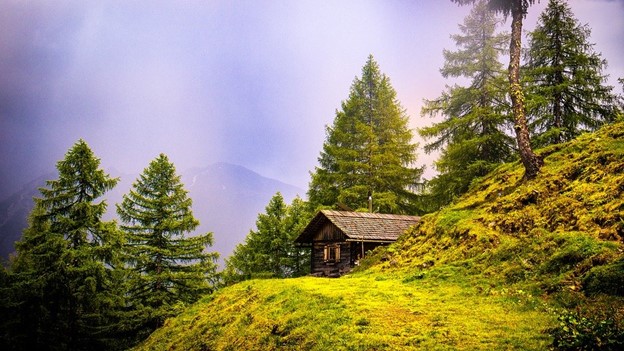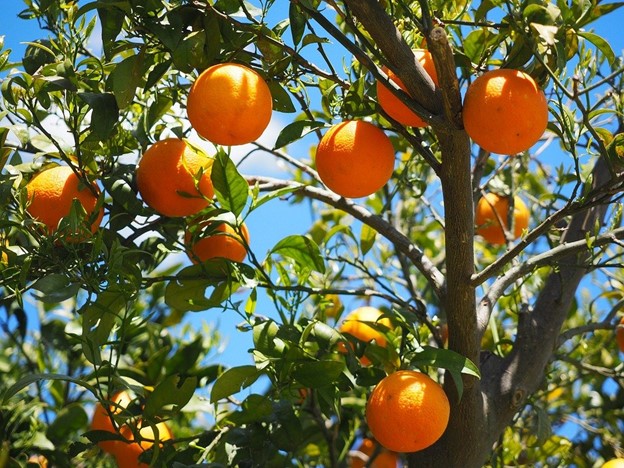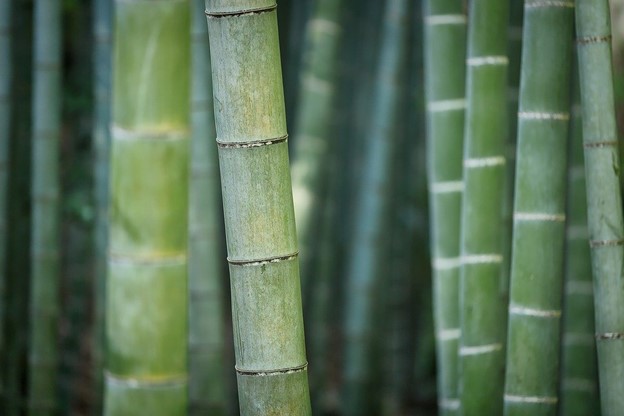
 Loading... Please wait...
Loading... Please wait...Save Money. Grow Your Own!
Fast Plain Box Shipping.
We ship to the US & Canada.
Posted on 7th Jun 2021
It might sound a little obvious when it comes to low-stress training autoflowers, feminized seeds, or plants in general. Give them more usable light and they’ll grow bigger. Voila!

Take a moment to think about the shape of your buds. Does it kind of remind you of a small Christmas tree? This is a scientific term known as apical dominance. It occurs naturally throughout nature and the easiest example would be the evergreen. Bushy at the bottom rising into a cone-like structure until its point.
There is a reason the top buds on your plants are growing the largest. The area receiving the most light grows the most. Unfortunately, this means that the lower branches are not going to receive as much light. Those lower branch yields won’t be as good and that’s all there is to it.
Before we explain low-stress training autoflowers, let’s do a quick exercise.
Don’t worry! There’s no Stair Master. This is an exercise of the brain to help you imagine low-stress training and why it makes a difference. By the time you’re done reading this article, you’ll be wondering how you’ve gone this far without it.

Picture a person setting up the aforementioned Christmas tree. It’s a lot of fun to decorate but eventually you run out of space around the outside. You’ve wrapped all of the lights, draped the tinsel, and hooked an ornament onto as many branches as humanly possible.
So, now what?
Look at all that space on the inside. Too bad there weren’t a type of evergreen that grew more horizontally than vertically. Imagine adding decorations to a tree the span of a couch vs. the height of the ceiling. If only there were a way. Maybe there is…
Let’s take it back. How does our imaginative example lead to bigger yields? It’s time to learn about low strain training autoflowers. Yes, you can low-stress train feminized seeds but they won’t be the focus of this article.
What is Low-Stress Training?
In terms of plants, low-stress training is a form of gentle manipulation along the early cycle to help the plants shape up differently. And by differently, we mean way better.

Instead of forming that apical dominant shape, such as the evergreen, this method will coach or train the plants to grow outward vs. upward. As the plants grow outward, those lower branches, whom would not have received as much light therefore converting less nutrients, will be able to compete with the tops. They typically dominate the hormones of the plant because they’re receiving the most light.
Take it from an experienced cultivation tech. Some of the yields on these manipulated buds will have your friends questioning which are the tops. You will seriously be wondering why you didn’t do this sooner. Better yields equal better time spent for you.
Low-stress training autoflowers is not the same as high stress training, aka topping. That’s a different process later in the growth cycle where branches are broken near the top to improve yields. Not to say this method doesn’t produce some decent buds, but it is NOT for autoflowers. The light and growth cycle can get messed up. Don’t risk it.
This is speaking to beginners, especially. Don’t do things to your plants that you are absolutely not comfortable doing. If you really need the easiest way to grow, try our Grandma’s Secret Garden grow box. You pretty much water the plants and presto.
The Short History of Low-Stress Training
Fruit farmers were initially the ones crediting for low-stress training. It’s the same process but with fruit trees. If the branches were too tall, it was much harder to gain the fruit near the top. This method let the trees grow outward and have fruit that was much more accessible to people who didn’t exactly have 24-foot ladders at their disposal. Much more fruit was picked and the harvest was far better.

When Do I Begin Low-Stress Training?
Low-stress training autoflowers beings in the early stages of the vegetative process during those first couple weeks. Teach the plant while is it young. Once it has grown up enough to see solid branches for tying, you may being the process. If the nubs are too small, you won’t be able to get a solid tie around them and should wait.

Some cultivation artists believe that the sooner this process begins, the better your yield. It’s possible to it later but not as strong. Use your best judgement based on your initial growth. Not all of them come up at the same height in the same time frame.
Another stage you can do low-stress training is the first week or weeks of flowering. Although the branches aren’t as easy to bend, there will be many more of them. The plant wants to flower as much as possible so it makes more branches. But what if you had done this part during the earlier stages? Wouldn’t there be more room to flower in the first place?
We recommend doing low-stress training in those early stages for sure. Think about it like training a puppy right from the start. You teach it the correct way of doing things and the future can be much happier. That’s not to say you couldn’t find an adorable shelter dog and give it a second chance. Simply put, why not train your plants correctly from the get-go?
What Will I Need for Low-Stress Training?

• The first thing we recommend is a drill. You will need this to make the holes around the rim of your pots.
• The second thing we recommend is soft garden wire or some type of easy string. Something the plants can dig into a bit without hurting them but also without breaking as the plant tugs along. Pipe cleaners are not a bad way to go but professional gardening tapes might your style.
• The next thing is some type of growing stick. Some people recommend bamboos sticks but we believe you can also use similar woods like a balsa or even thin dowels. The plants won’t really know the difference. If anything, it’s more of how pretty you want your grow to look. Some people don’t care so long as the plants are growing tall.
• Something to consider is the amount of space. Low-stress training autoflowers or even feminized seeds can lead to awfully-wide plant growth. Do you have enough room for those to spread out? It is much easier to do this from a pot with space than trying to cram it into an area where it can’t open up.
If space is your issue, we recommend our Cash Crop grow box! Perfect for beginners.
What Are the Steps for Low-Stress Training?
• Step 1 – Drill the adequate amount of holes based on the number of stems.
• Step 2 – Gently tie each one of the stems with your soft garden wire to one of the holes. Consider where it is you are tying. Too close to the end of the branch may have it slipping off as it grows. Pick a sturdy spot. Something to consider is that new branches and roots will appear as time goes. You will want to continue this process of tying them off.
• Step 3 – This step could be optional but is highly recommended. It will help the yield for sure.

Think about the shape of a pot. How far can you really pull those branches when the outside of the rim only goes so far in this first place? Although cinching up the string to aim the plant outward works, this can be a pain. The better idea is to use some type of wood to stretch it out.
Lay your pieces of balsa, bamboo, or other wood across the rim of your pot. You’ll want to anchor them down with string or whatever it is you used to tie off your plants. Over time, the goal here is to add string to the branches to help aim it outward. It will allow them to separate as much as possible and soak up much more light. Think about it like a bushy bush vs evergreen shape in your yard.
• Step 4 – Continue the process as the plants grow. Something important to consider is the thickness of the branches. Older ones are much more prone to snapping off vs those malleable younglings. Be careful and this shouldn’t be a problem.
If something breaks, it’s ok! Plants have a way of regenerating in new ways. That’s basically the foundation behind the process of topping or high stress training. During defoliation, I have broken off branches and tops that made me feel horrible. My fellow cultivation techs reassured me that things can bounce back.
Be careful. That’s all.
Do I Need to Do Low-Stress Training?
No. You really don’t. Autoflowering plants LOVE TO GROW and they will. If you’re a beginner and this process sounds overwhelming to even read about, skip it. Hop over to our other pages about grow boxes for beginners. Our all-in-one setups can yield 2-3 lbs. per plant cycle.
For the rest of you - should you do low-stress training? Absolutely yes!
This process is so simple from the beginning if you follow those easy steps. As much fun as it is to hold one monster cola in the palm of your hand, imagine holding several tops. Those are tops you created just by bending the branches. Your yield is going to be incredible by comparison, especially if you did happen to go with feminized seeds.
In summation, low-stress training autoflowers will improve your yield and drop those jaws!